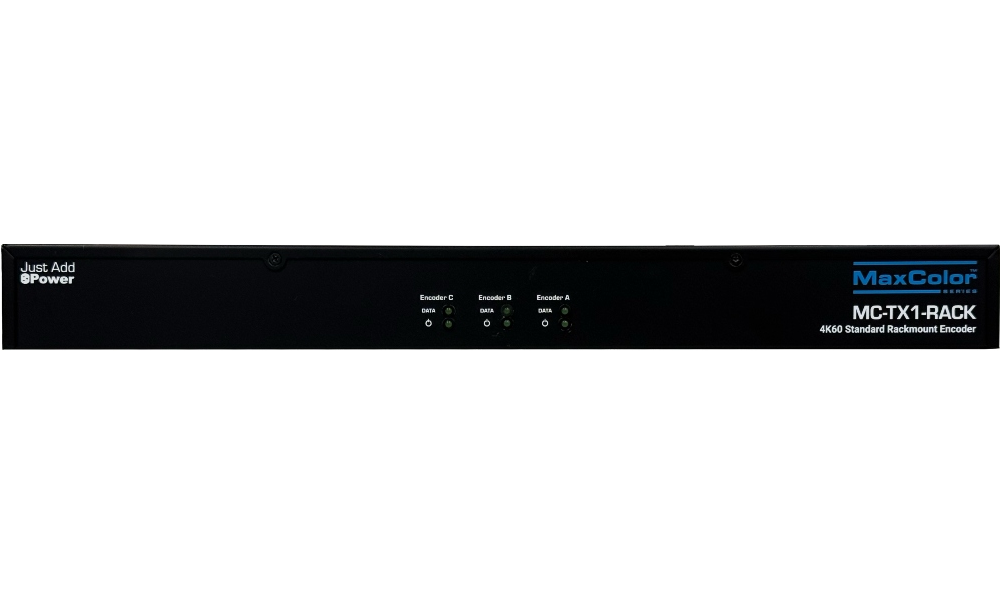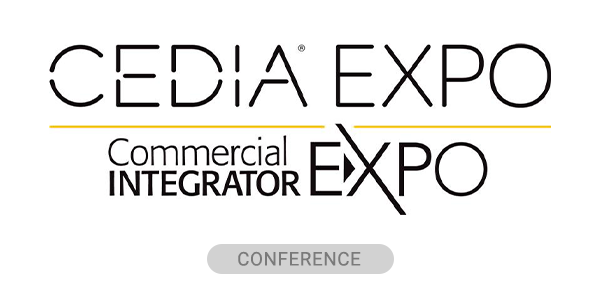Just Add Power has unveiled the MC-TX1-RACK, a rackmount solution that consolidates three of the company’s MaxColor encoders into a single chassis. The new unit is designed to simplify video distribution installs from more compact setups, all the way to large-scale AV-over-IP (AVoIP) installs while supporting the same feature set as the company’s standalone MaxColor products, including 4K60 4:4:4 video, all audio formats and Audio Return Channel (ARC) support.
MC-TX1-RACK Features
According to Just Add Power, the three rack unit chassis was developed in response to integrator feedback requesting a more efficient way to deploy multiple encoders.
“The MC-TX1-RACK is a direct response to customer needs, offering a unique, space-saving solution that simplifies complex installations while delivering the high-performance AV distribution Just Add Power is known for,” said Ed Qualls, CEO of Just Add Power.
By combining three units into one, Just Add Power says the MC-TX1-RACK aims to reduce cable clutter, speed up installation and centralize power delivery through PoE, removing the need for external power supplies.
The company also emphasizes that integrating multiple encoders in one chassis not only saves space but can also improve system reliability by reducing potential points of failure.
The design also places ports on the front of the unit for added accessibility in rack-based deployments, with the unit shipping fully assembled and ready to install.
Understanding AVoIP’s Place in Distributed Audio Systems
While traditionally a commercial solution, AVoIP has gradually been gaining traction in large-scale, luxury installations through platforms such as Dante, with standards like AES67 working to improve interoperability between networked audio devices.
A contributing factor to this has not only been the size of many audio installations taking place in residential projects nowadays, but also the fact that multiroom audio is becoming more common with the rise in scale on these projects.
Because AVoIP solutions can operate over standard IP networking cables (Cat5e/Cat6) that are already present in smart home installations, it has the potential to drastically simplify cabling requirements overall.
Where AVoIP Stands Today
Despite the simplicity it adds in cabling, however, AVoIP remains a rather complex installation for many traditional AV integrators to get into. Part of the issue is in the nature of the install requiring elements of IT, which many technicians are unfamiliar with given their work experience.
In a 2020 study conducted by CE Pro’s sister publication, Commercial Integrator, 56% of respondents stated that a lack of networking and IT knowledge among staff is the number one barrier to entry to these types of installations. Another deterring factor is often cost, as experts in the field of AVoIP pointed out around the same time as the study.
Both assessments, despite occurring over five years ago at this point, still roughly hold true to this day.
The Need for Simplified Systems Yet Remains
Beyond AVoIP installations, however, rack density and space optimization remain a critical priority for integrators, especially when discussing the scale of specific projects.
As audio and video distribution grow to encompass entire homes where the square footage of such homes can often encompass multiple acres when including outdoor areas, the amount of cabling and runs needed to support everything can become very unwieldy, very quickly.
As a result, solutions that can reduce this complexity in any way have grown to be prized resources among integrators.
Additionally, the inclusion of ARC support and comprehensive audio compatibility adds some much-needed flexibility in managing two-way audio within distributed systems, with modern systems often needing to accommodate multiple formats and evolving client expectations around audio-video interoperability.







